Tasmania, Dec 2017
Ever since I returned to Australia I have had my eye on a trip to Tasmania. At some point we will do this as a family, but I have learned over the years that holidays and birding rarely go well together. In December 2017, Nikki and Lou were back in England, and Erica in Cambodia on a school trip, so I found myself at home alone. Maybe this would be the chance to get the birds without upsetting the family.
Tasmania holds around a dozen endemics but the key bird for me was not actually endemic, but the small, rare migratory Orange-bellied Parrot. This would be the last of the Neophemas for me. Previously they overwintered in the Coorong south of Adelaide, but in recent years their numbers and winter range have contracted dramatically (the last confirmed SA sighting was in 2013). Only one known breeding site remains, Melaleuca in the far SW of the Tasmanian wilderness, and the news from there each year has been of declining numbers. For each of the last three years their numbers have been supplemented by the recovery team with releases of captive bred birds, but the survival rate of the release birds is even lower than for the wild birds. In 2017 only 18 – yep, one, eight – returned, including only 3 females, making it extremely likely this year could be the last possible chance to see a truly wild population. You understand that I therefore had to use the alone time in Adelaide to put a smash-and-grab trip to Tassie in place.
A further complication is that the only way to get to Melaleuca is to walk for 5 days, or fly in on a light aircraft. ParAvion make this flight once each morning and evening but if the weather is inclement – fog, wind or rain – the trips get cancelled or postponed. Even in summer the Tasmanian weather is unpredictable so it was essential for me to have at least 3 days in Tassie. I would use the “spare” days to look for the endemics.
The trip to Melaleuca is very expensive – around $400 per person just for the day trip – but I can keep the other costs down by using some just-about-to-expire frequent flier points and fly Virgin from Adelaide to Hobart via Melbourne for free (yay!) and bring a tent with me to keep accommodation costs to a minimum.
14 Dec
I arrive in Tassie to the news that my day-trip to Melaleuca the next day is off. Just as well that I have allowed the extra time. The good news is that this means that local birder, Els Wakefield, is available to come out birding with me and chase endemics around Hobart. Els has also incredibly generously lent me her basement studio flat for the night so I don’t have to camp tonight.
A few hours after I arrive, Els and I have arranged to meet with another local birder to look for owls. My main target is Masked Owl, and one is seen regularly (maybe that’s occasionally…) up at the Waterworks Reserve on the outskirts of Hobart in the shadow of Mt Wellington. Els and I arrive at last light and I score my first endemic, Yellow Wattlebird. Once the sun has set we meet with Els’ friend, then spend 3-4 hours trying various spots where he has seen the owl within the last week. Sadly we do not even hear a Morepork let alone a Masked Owl. We do encounter lots of the mammalian wildlife with Pademelons, Red-necked Wallabies, Brush-tail Possums (much darker here in Tassie) all out in good numbers, and best of all, brief views of an Eastern Bettong. Towards the end of our search we hear a Tawny Frogmouth but it’s a fair way off, it’s been a long day and I do not have the enthusiasm to chase it down.
Next morning Els and I head back to the Waterworks in the light. I hear a high-pitched drawn-out contact call and I’m pretty confident this is a Bassian Thrush but it will not show itself. Spotted Pardalote poses nicely at the top of the trail. The reason we have come here is a non-endemic but lifer target Pink Robin, a stunner that is the one robin species from southern mainland Australia I have yet to see. It proves elusive but finally we find one, though it is uncooperative, singing from unobtrusive perches high above us. I chase it long enough to obtain decent tickable views but no decent photo ops. In contrast a pair of endemic Dusky Robins pose beautifully as we get back to the car.

We head up Mt Wellington to the Springs. Here along a trail we find more of my targets. First up, a pair of Green Rosella. Next a (non-lifer) Olive Whistler poses nicely, then a dainty brown thornbill shows its diagnostic tufty white undertail coverts – it’s not a Brown Thornbill but am endemic Tasmanian Thornbill.


We are on this particular trail because it is one of the best local sites for Scrubtit, arguably the hardest of the Tasmanian endemics because of its skulking nature. We try a few spots and then in response to a bit of playback a tiny bird lands on a branch about 3m in front of us –Els calls it excitedly and I get on it in time to see a small, long-billed passerine – Scrubtit – before it disappears for good. On our way back to the car we find a pair of Tasmanian Scrubwren.
We ascend Mt Wellington, stopping briefly to clock a Black Currawong (another endemic lifer) and a gorgeous group of Flame Robins.



At the summit the views in all directions are unbelievable. The heath is ablaze with colour from wildflowers. Below us to the east the city of Hobart clusters around the Derwent River, while to the west the mountains stretch off as far as the eye can see towards the wilderness that I hope to visit tomorrow.

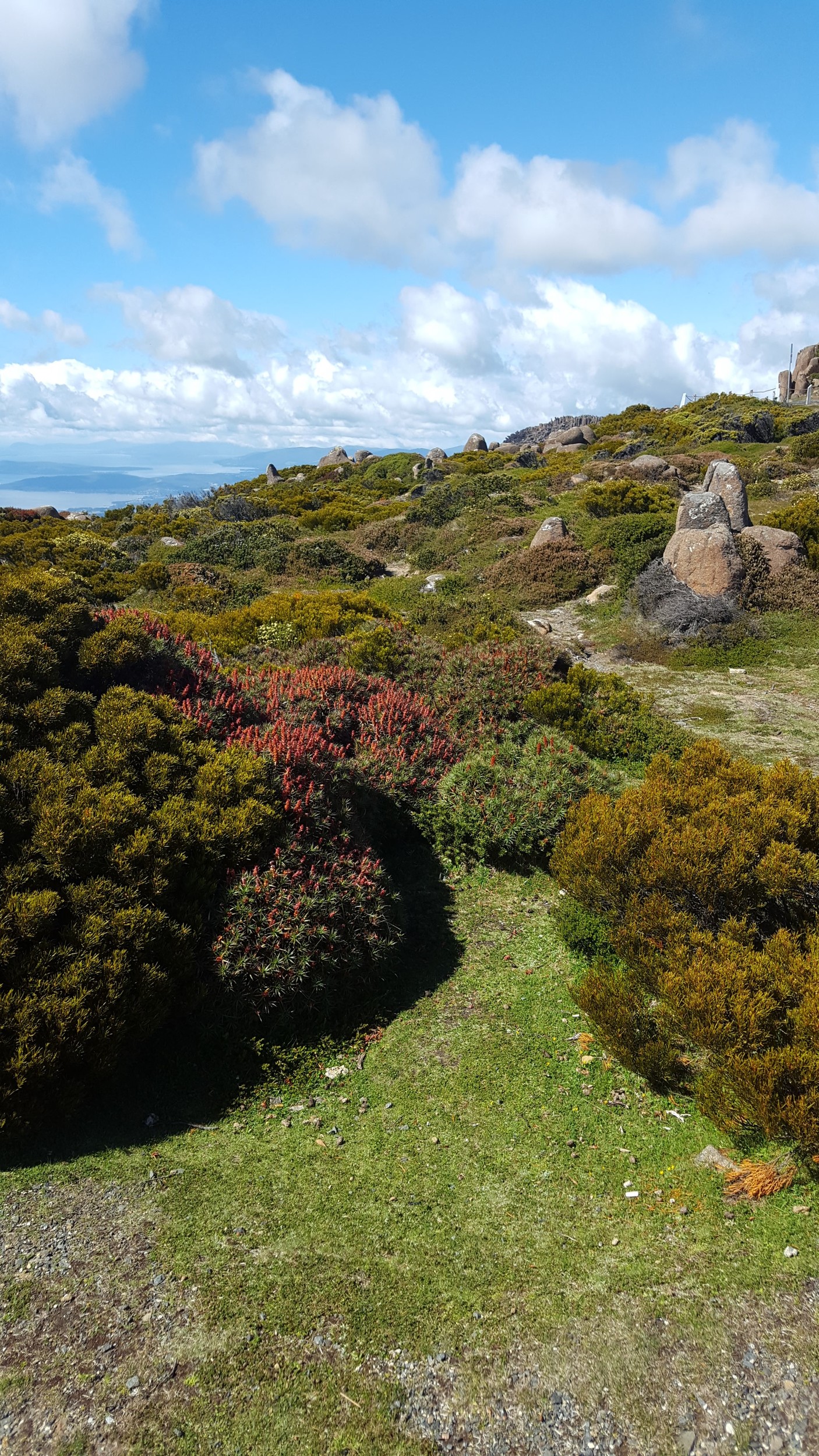
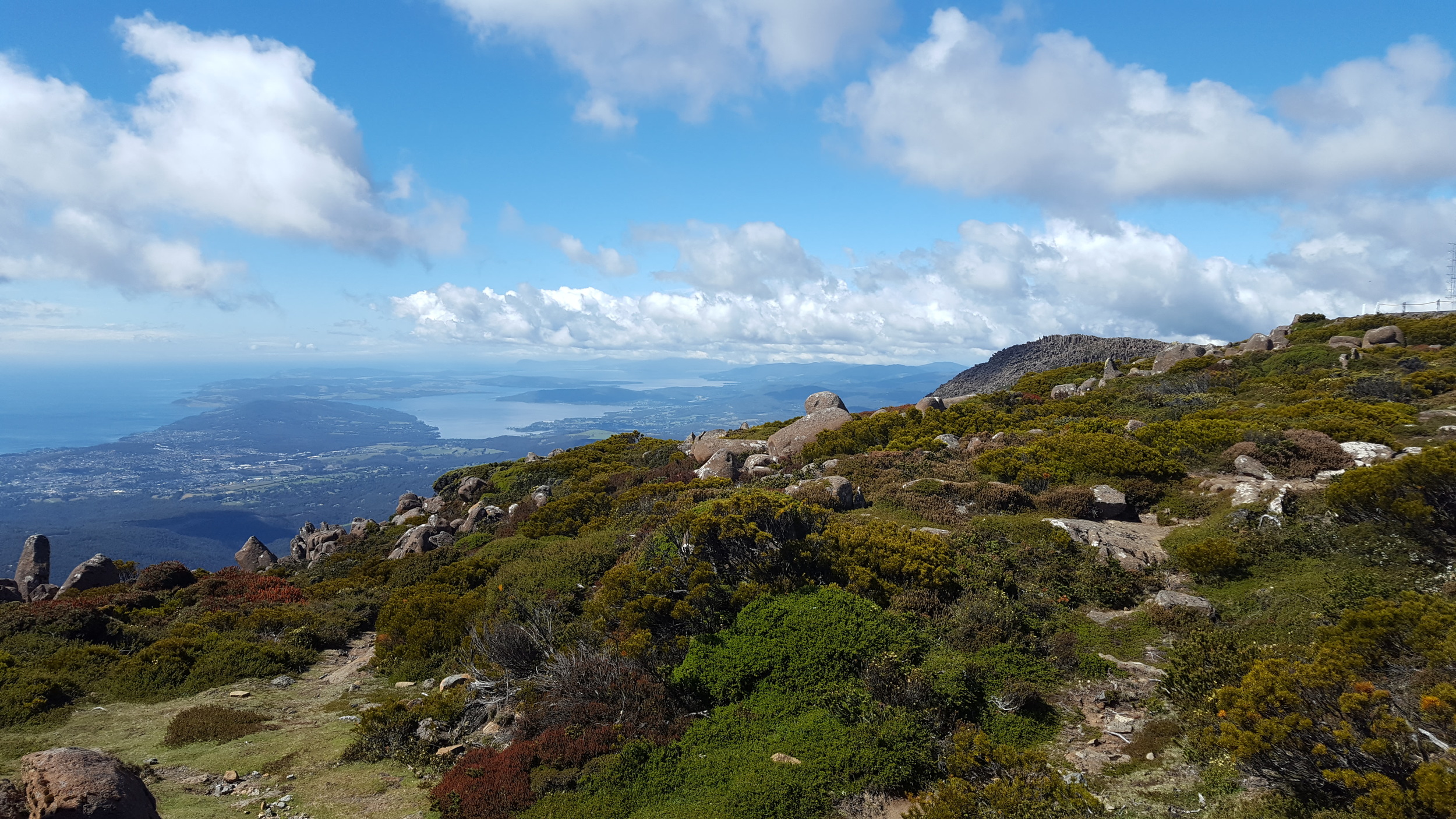

More Flame Robins, Forest Raven and Wedge-tailed Eagle (endangered in Tasmania) are the birds up here.
We take lunch in a lovely café a few km south of the city, en route to our next destination, Putalina at Oyster Cove. A Blue-winged Parrot on a power line brings the car to a halt.
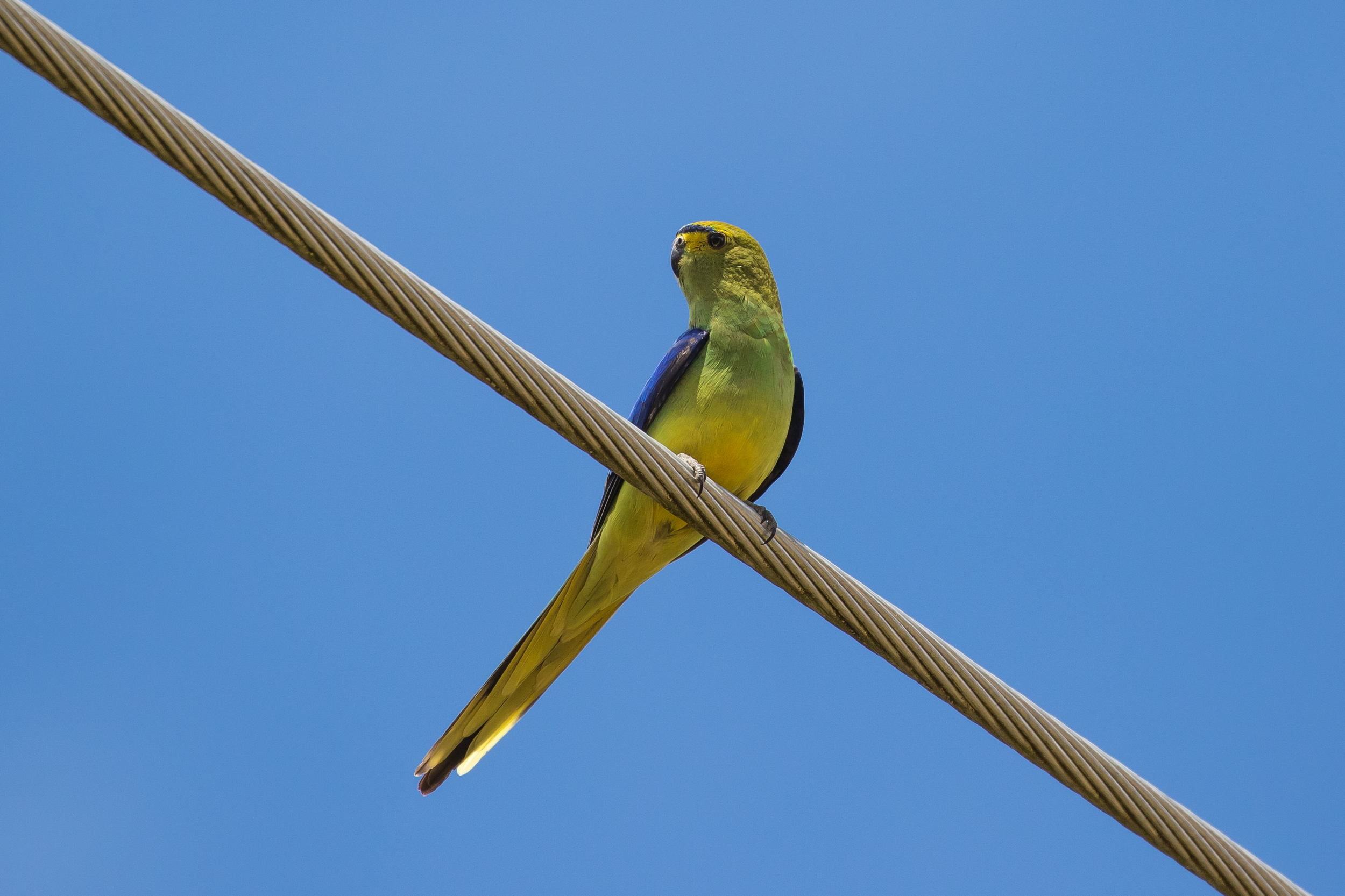
The reserve itself holds some excellent birding, and we find all three endemic honeyeaters – Yellow-throated, Black-headed and Strong-billed Honeyeaters – in good numbers here, as well as Tasmanian Nativehen.





On our way back to Hobart we call in at a farm dam where we scan the water for tell-tale ripples. I have never seen a wild platypus, that most bizarre of Australian mammals. This is a known spot, but unfortunately today does not change my platypus-less status.
The final treat of the day comes as Els takes me to her favorite chippy and we enjoy a walk along the beach followed by Fish and Chips on the east bank of the Derwent not far from Blundstone Arena.
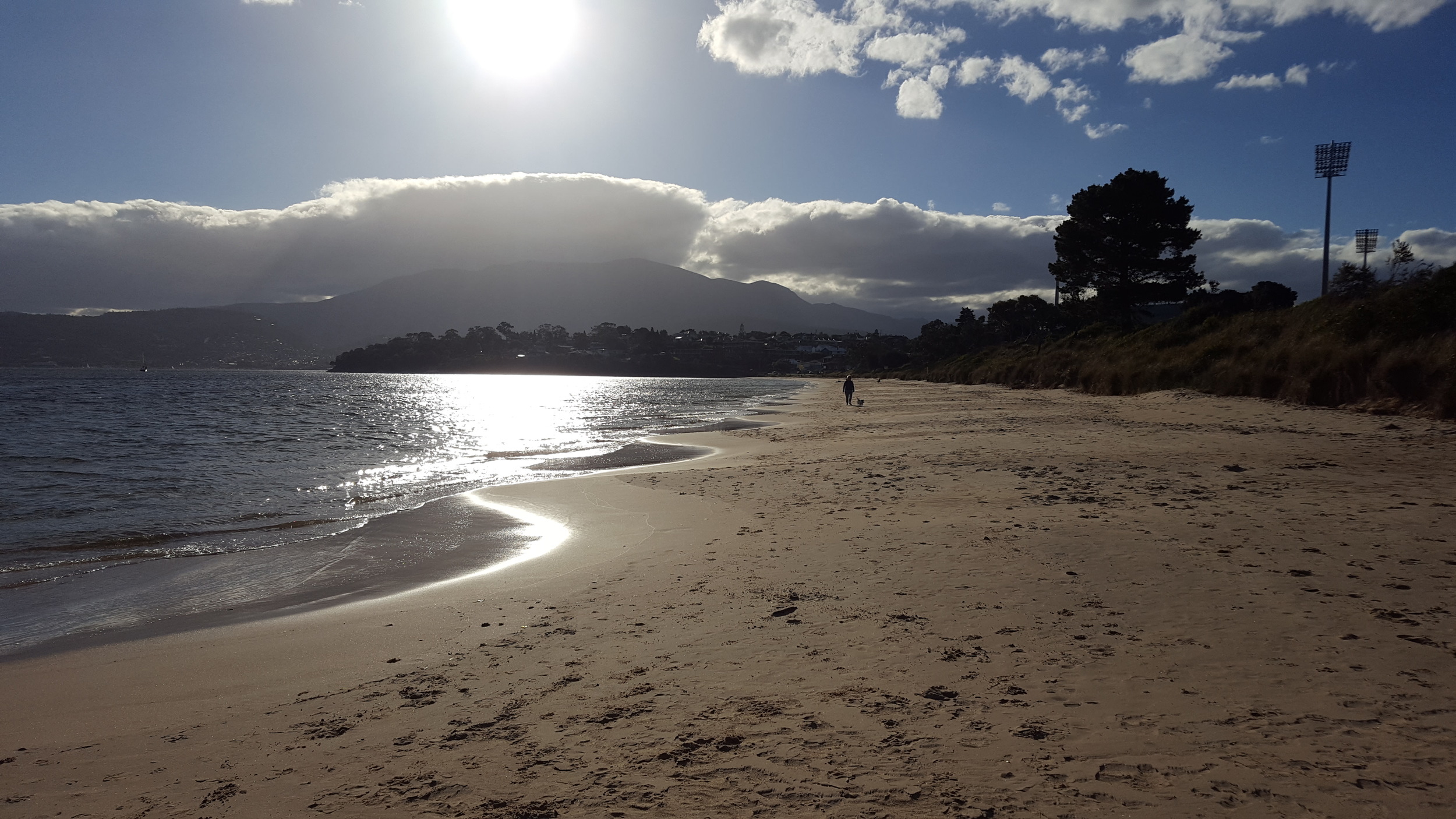
15 Dec
Par Avion has confirmed that today’s flights to Melaleuca will go ahead so I arrive with a palpable sense of excitement and nervousness in plenty of time for my flight. There are around 15 or so of us loitering in the small check-in and departure lounge and eventually we load up into 3 separate aircraft. I am with two other day-trippers in a tiny 4-seater, single-engine craft. We turn south west, passing Bruny Island on our left and track the coast around in a wonderful scenic flight with stunning views of the beaches, cliffs and mountains to our right.



Unfortunately, fearful of dehydration later in the day, I have consumed too much water and coffee before the flight. As we chug along the coast the pressure builds to the point where I am in physical pain. By the time we land at Melaleuca after a 70 minute flight I can barely stand up and amazed I have not pissed myself. But landing does not bring the hoped-for immediate relief; Melaleuca is characterized by extensive tracts of low heath and the airstrip is in the middle of open heathland, so there is no cover that I can duck behind for a quick slash. Instead I have to hobble my way as quickly as possible, 3-4 mins in my compromised state, to the hiker’s shelters where there is a long-drop toilet.
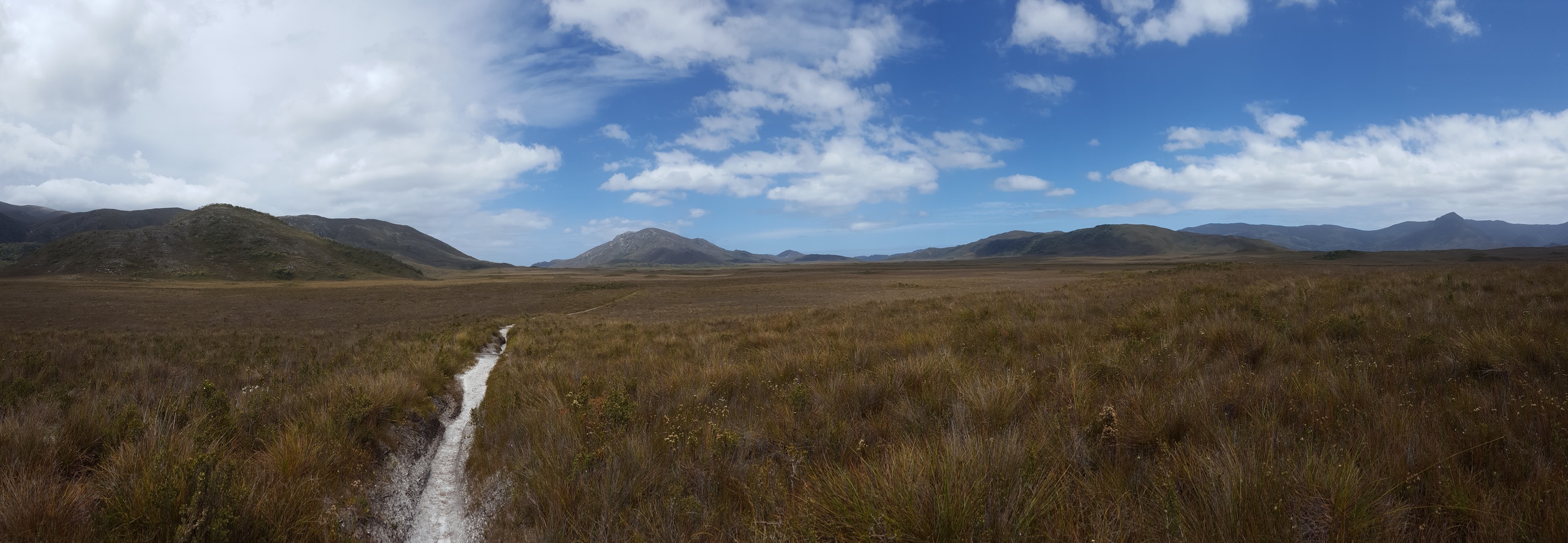

Finally relieved I walk as quickly as I can back to the hide where the other day-trippers have assembled. From the path I quickly scan the feeding station and see nothing, before entering the hide. And then, as I enter, I am confronted by the words that no birder wants to hear: “they were just here, you’ve missed them”. Arghhhh!!! Have I just missed my only chance to see this bird – that could be extinct within 12 months – because I needed the loo??? Even worse, it’s one of the non-birders who has gripped me off. I resist the urge for physical violence, curse my luck, and spend the next few minutes sulking. I have no choice, though, but to settle in for the long haul – I will wait here until the flight this afternoon if I need to.
A few other birds are noted from the hide in the scrub and trees including Yellow-throated Honeyeater and Black Currawong. A scruffy (perhaps even diseased) Green Rosella and then a gorgeous and aptly named Beautiful Firetail visit the feeding station.



After what feels like an eternity – maybe 45 minutes in real life – the moment I have come for: a couple of small parrots fly into a tree at the back of the clearing some distance away. Immediately I am onto one of them and see a dainty brilliant green bird with a small orange splodge on its tummy – my first Orange-bellied Parrot.
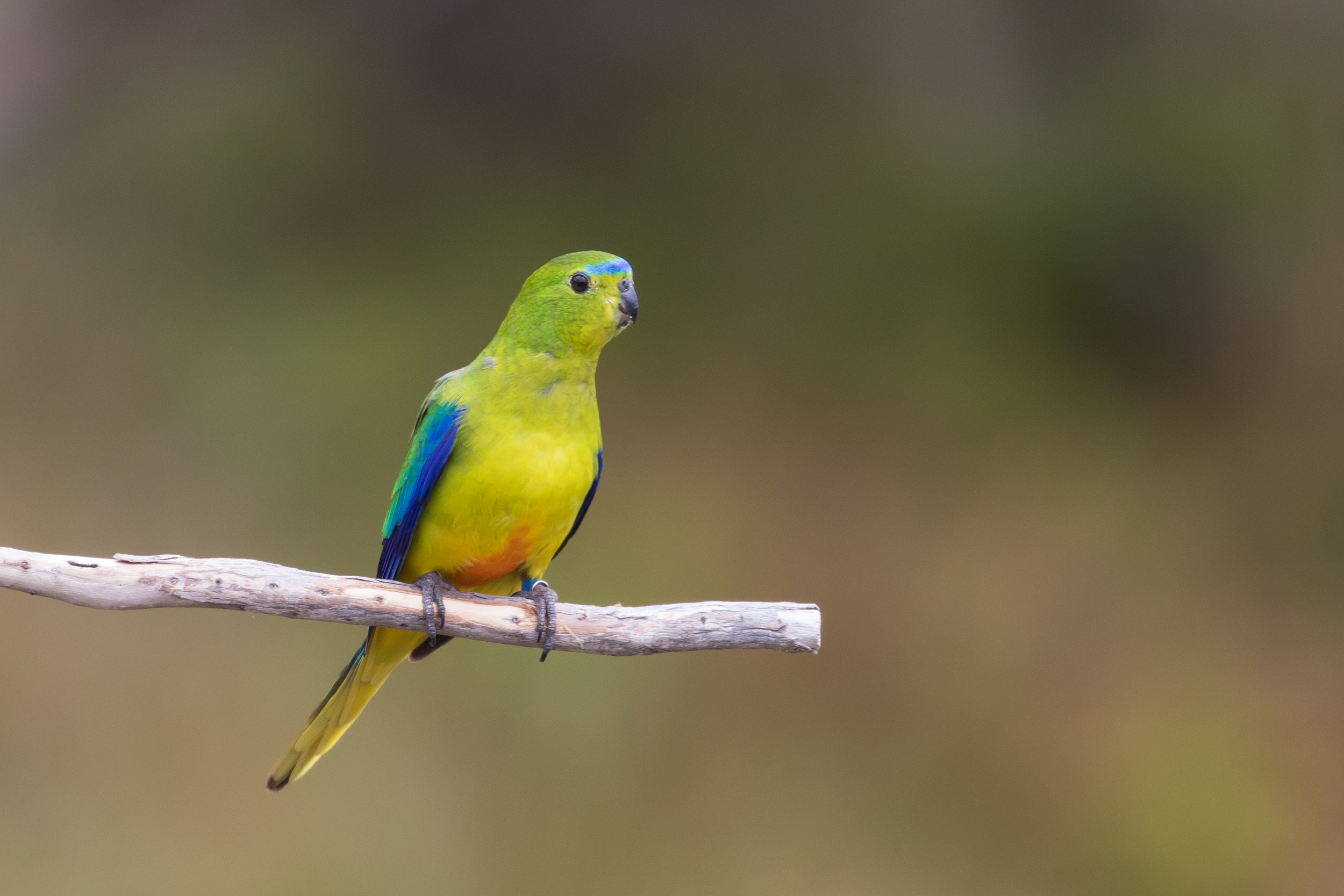
This is great, but standing in a hide with a feeding station a few metres away, a distant slightly obscured view is not what I have had in mind. I hold my breath and hope that everyone in the hide stays quiet and still and calm. The longer it goes, the greater the tension, but after what seems like another age, the birds fly down to the feeding station and we can appreciate them close up. The OBPs here in Melaleuca (not that any are know from anywhere else other than aviaries) are a mixture of the 18 wild birds that have returned and a set of captive bred releases. All are banded, so I am relieved to be able to note that at least one of the birds I see is identifiable from its leg band as a returned wild bird.




Most of the day-trippers head off for a boat trip but I have made it clear that I will spend the day here in the hide and the immediate environs. Another punter with an impressive looking lens also elects to stay. Luke Paterson (NT Bird Specialists) is here on a holiday with his fiancée and couple of friends but like me, his sole objective for today is to score the best possible views and photos of one of the world’s rarest parrots. After everyone else has left he confesses that he was in the group that saw the birds when they first arrived, but he could tell I was a birder so kept schtum when I arrived, and then felt my pain when the non-birder blurted out the gripping gen.
After a while in the hide the action has died down – it’s that middle-of-day lull and I decide to go for a wander along the trails in the heath. I cross the airstrip and follow the path that the walkers have traversed earlier in the day towards the coast. Immediately I find a small party of Striated Fieldwrens. I then find another OBP on the ledge outside its nest box not far from a second feeding station. My main hope in wandering around, though, is to find an Eastern Ground Parrot but after more than hour walking around I have not even unequivocally heard one.
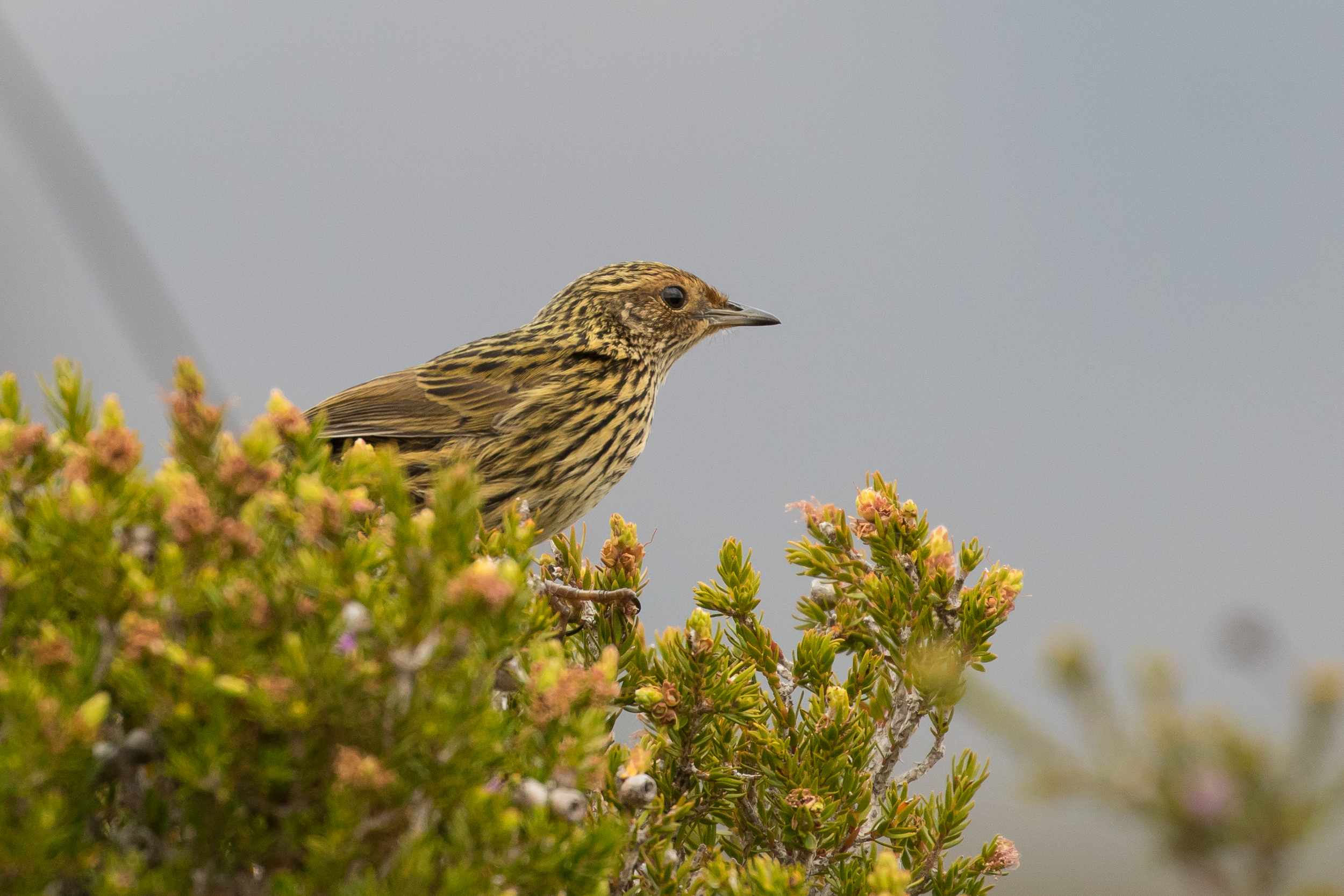
I go back to the hide where Luke reports not much further action, though soon after I return a couple more OBPs pay a visit. As we wait for the flight back to Hobart by the airstrip I think I hear a Ground Parrot and again wander through the heath in my final few minutes at Melaleuca, but to no avail.
The flight back is even more spectacular than the flight here. On our outward journey from Hobart to Melaleuca we tracked the coast south-west (despite my discomfort I could still appreciate the scenery), but now we head initially north along the coast then turn east, inland over the mountains. Isolated crags reach up towards us and in the tiny aircraft it feels we can almost reach out and touch them. Mountain tarns dot the heath and untouched wilderness forest.





Back in Hobart I am once again grateful to Els for extending her welcome for another night. After dinner with her and her delightful granddaughter (who reads Hairy McClary and Zachary Quack with me J), I head back to the Waterworks Reserve alone hoping to connect with some night-birds. I am out of luck with Masked Owl – not even a sniff – but tonight I hear several Morepork. Sadly none is cooperative so despite a lot of walking around and chasing down two separate birds, I end the evening empty-handed.
16 Dec
I rise early and drive directly to Kettering where I am on the first the ferry crossing to Bruny. Minutes later I pull up at a spot suggested by Els and immediately find the remaining daytime endemic lifer available, Forty Spotted Pardalote. A small family party at this pull-in commutes back and forth across the road giving me nice views, though they are a bit distant for good photos. Yellow Wattlebirds are conspicuous here and I have my first since the first evening.



From here I drive over the neck to Adventure Bay where I walk the Mavista trail. Instantly I hear a high-pitched squeaking and track down a small group of Scrubtit, and then I walk up a scenic moss-covered wet gully finding Pink Robin, Green Rosella, Tasmanian Scrubwren, and a few other sp.



I grab a sandwich for lunch at Adventure Bay and ask at the caravan park about Swift Parrots. The flowering gums here and at the ferry crossing are reported in various site-guides as regular haunts, but there are no gums in flower this year and parrots know this – they are apparently good numbers in a forest about an hour north of Hobart and none on Bruny this year.
From here I drove south to Jetty Beach and a small, delightful national park campsite. I set my tent and enjoy the company of a very tame pair of Dusky Robins. In the heathland behind the campsite I spend a couple of hours walking, again hoping for Ground Parrot, but find only Tawny-crowed Honeyeater. I do have a couple of great encounters with the Tasmanian race of Short-beaked Echidna, much browner and furrier – and tamer – than the mainland variety.

At the neck for dusk I arrive where a crowd has already begun to gather. At this spot Little Penguins come to shore, but it is almost completely dark by the time the first arrive. More interesting to me are the hundreds of Short-tailed Shearwaters that are also coming back to shore at this time. While the smallish crowd waits to see if there are any more penguins coming in, I walk up to the top of the ridge and enjoy the sounds and twilight sights of the shearwaters circling and then bombing down to burrows below the boardwalk.



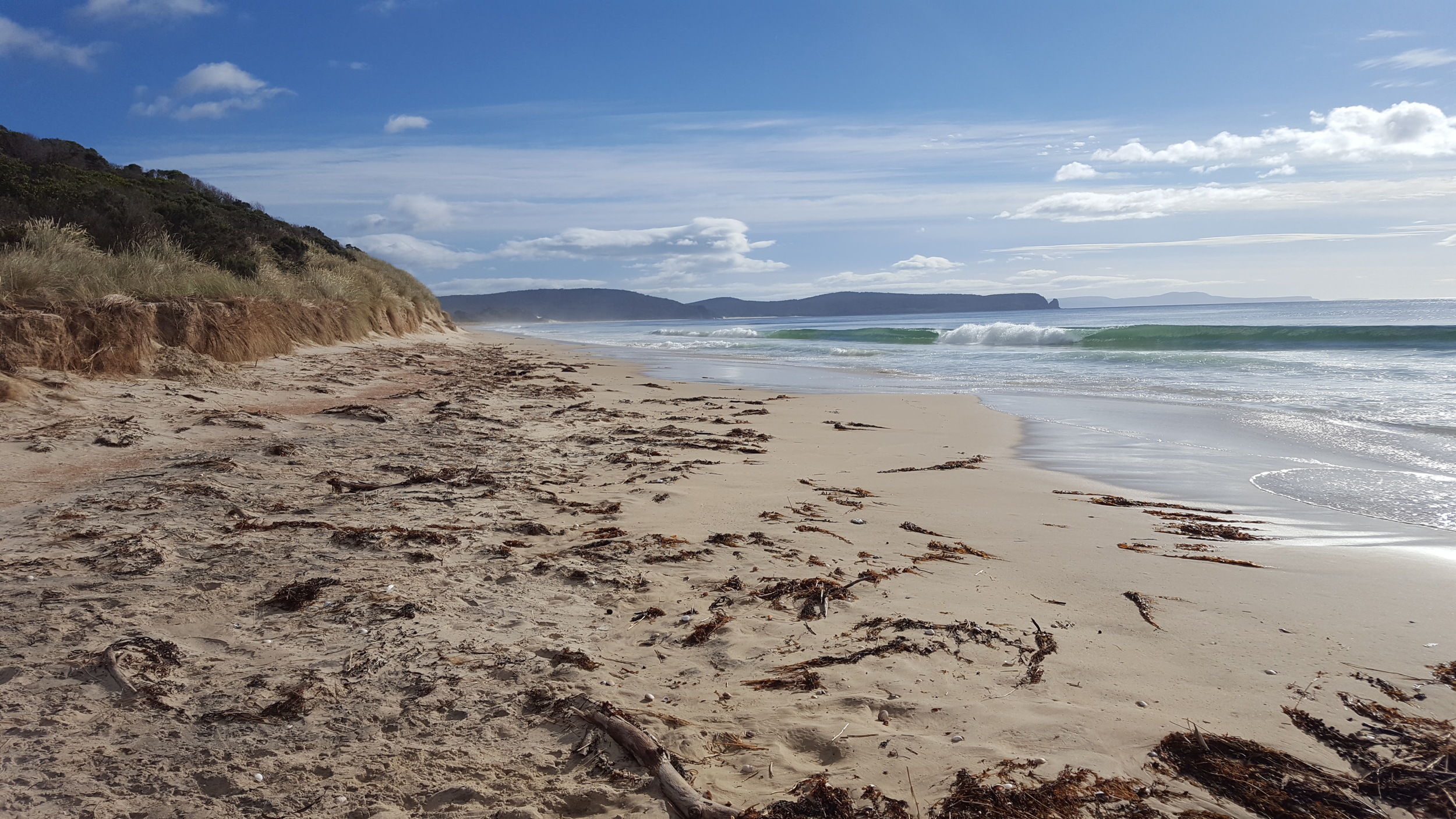
Hotel Bruny is the only pub on the island and I have had the foresight to book a table for dinner. Over a pint of local beer and an excellent fantastic slow-cooked lamb shoulder, I watch Steve Smith rack up his double century and he and Mitch Marsh put the poms to the sword in the Perth test. I choose not to go spotlighting for Quolls in the northern part of the island, hoping that I will run into one on the drive south to the campsite, and by the time I get back the campsite I am too tried to go out spotlighting for mammals or owls. Later I will wonder why I failed to push myself – maybe I am subliminally making sure I have something new to see when I do get to return with the family some day.
17 Dec
After a surprisingly comfortable night in the tent I walk the heath-land again, seeing more Tawny-crowned H-E, a couple of White-bellied Sea Eagle, but dipping once again on Ground Parrot. This time I make a complete loop, descending to the beaches on the sheltered north-facing part on the isthmus. I see no new birds, but the scenery is superb.

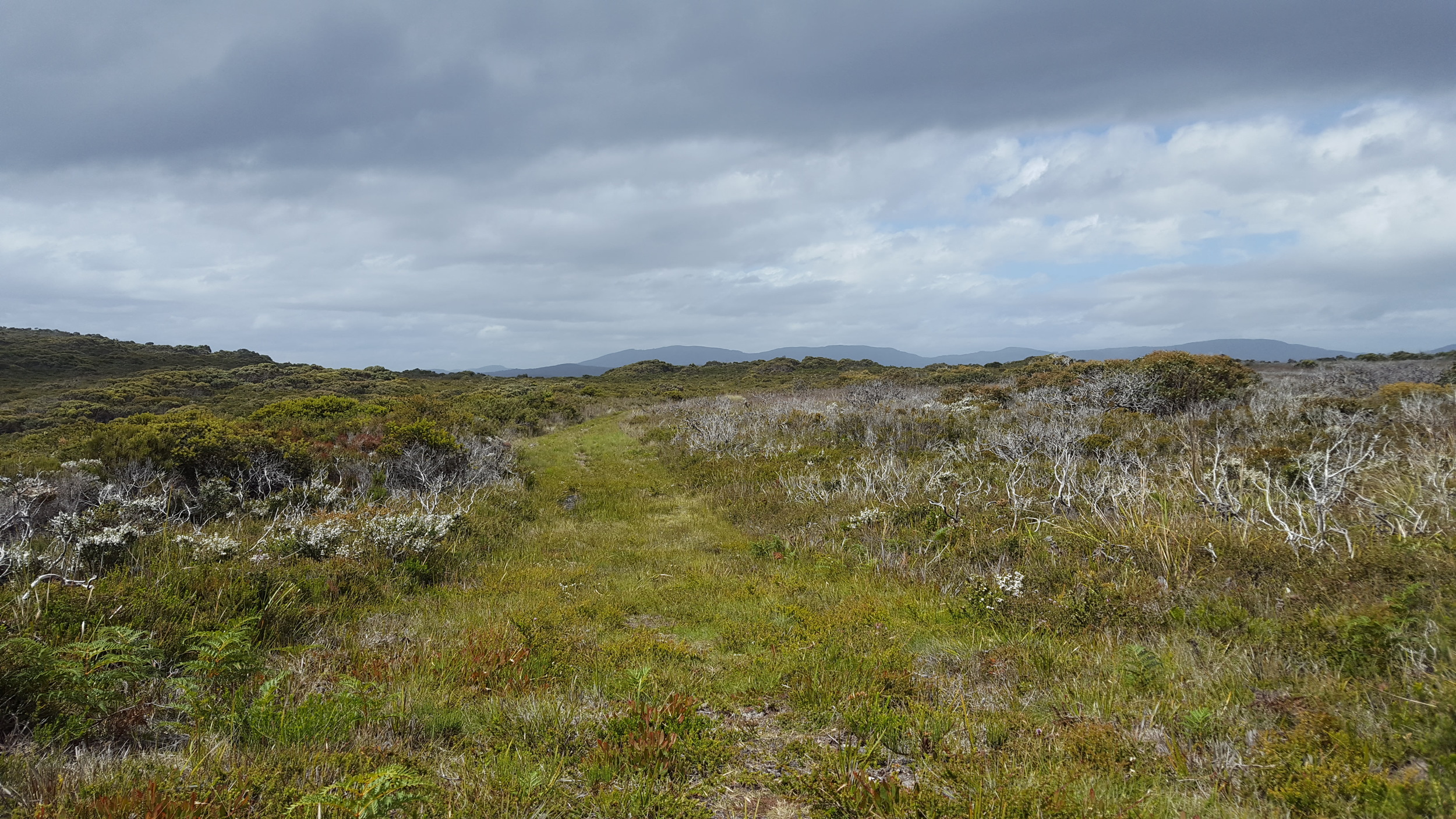
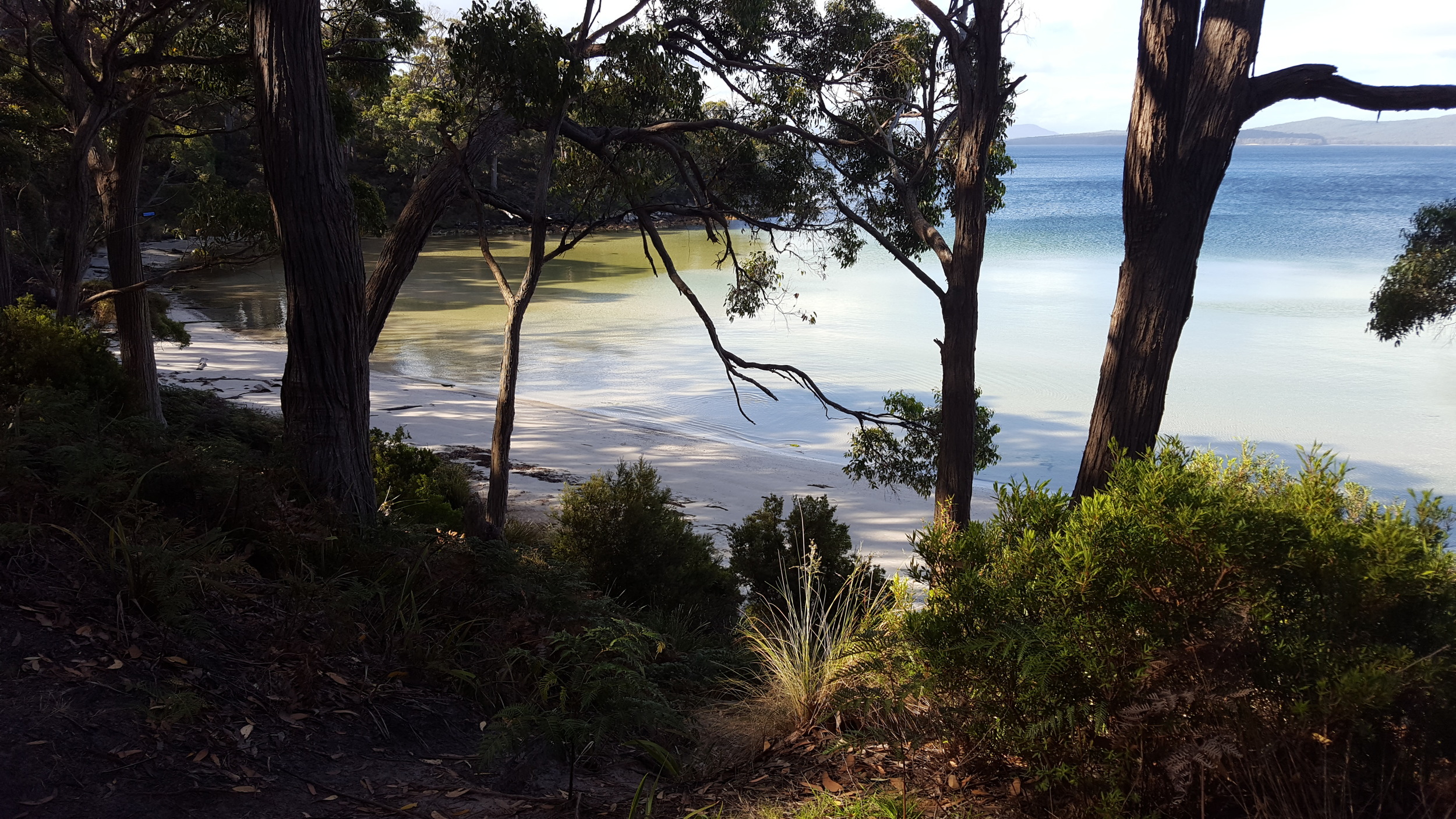
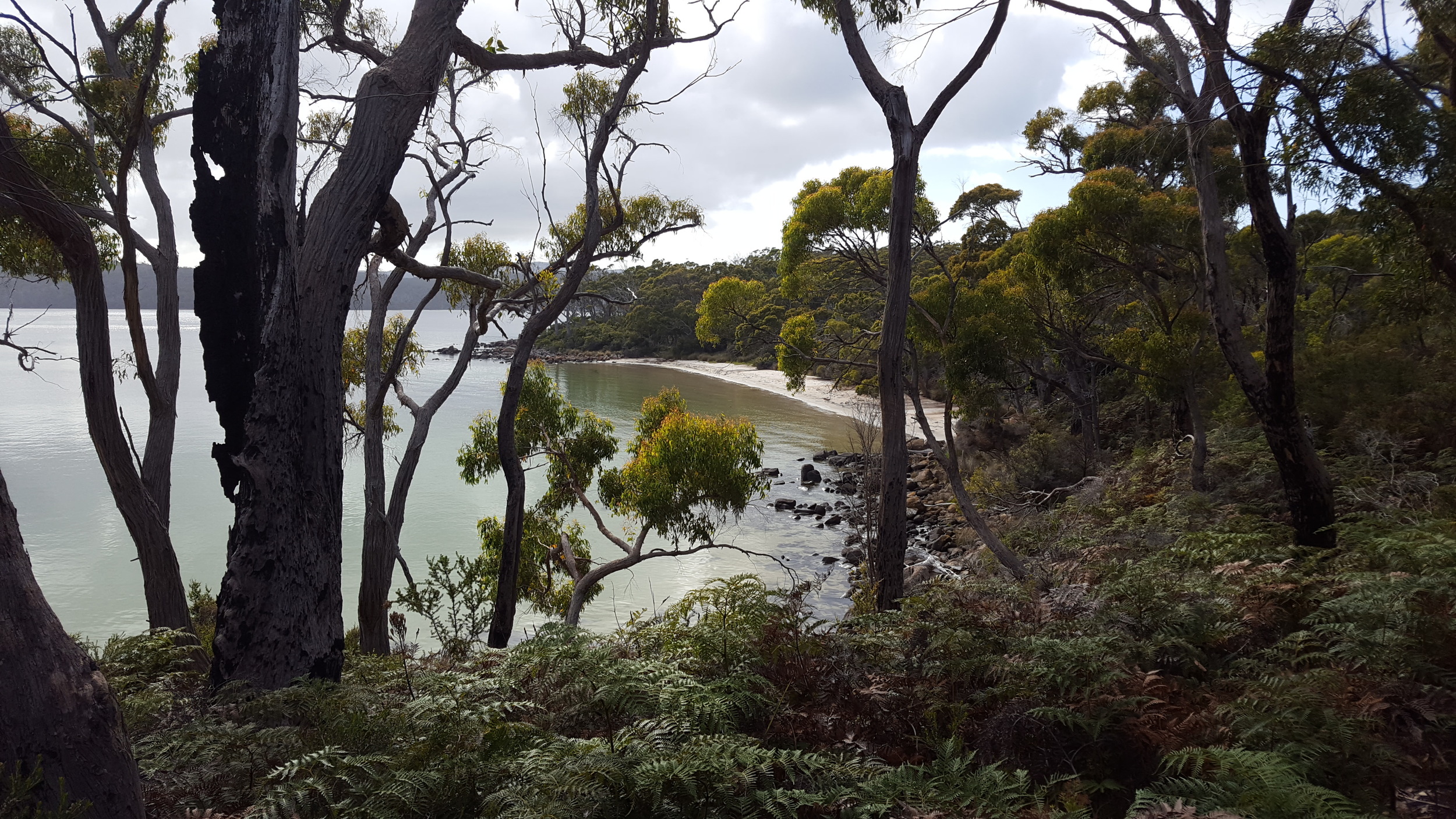
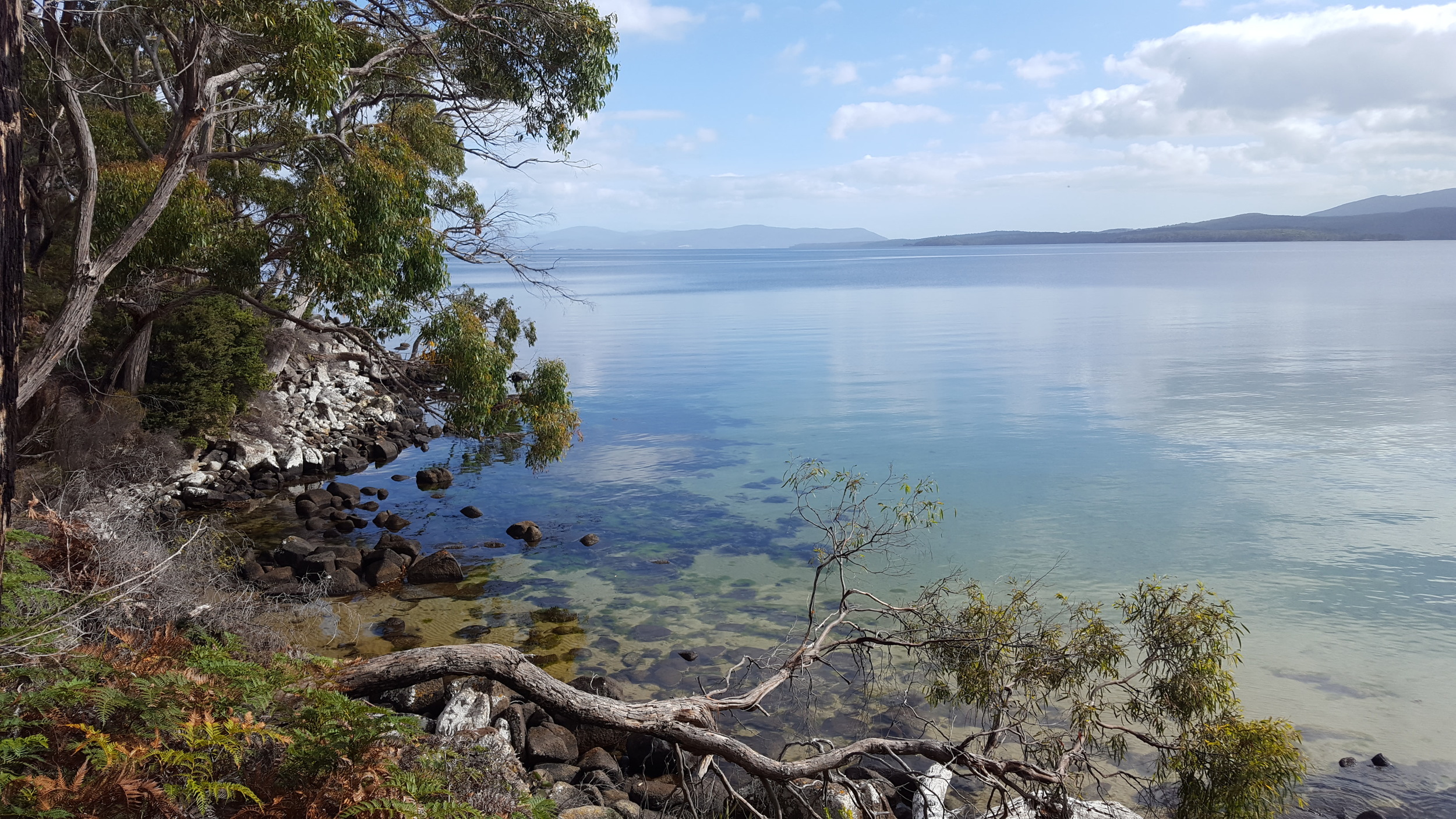

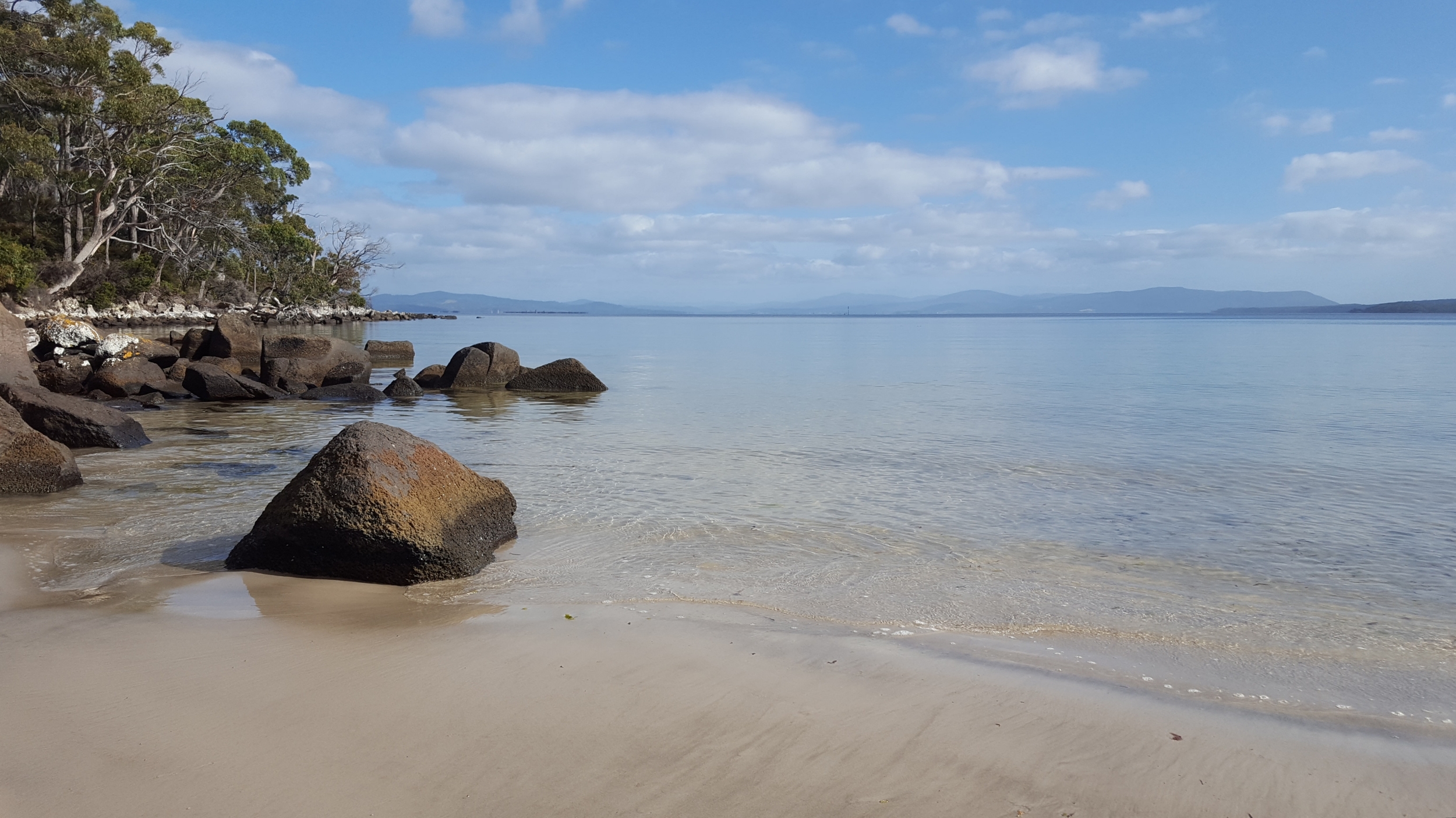
After a visit to the lighthouse I head north, walk the Mavista trail again (best pics of Tasmanian Scrubwren) before reaching the northern-most top of the island at Dennes Point. Apart from more gorgeous views, Sooty Oystercatcher and Crested Terns in the bay are the main interest until I stop at a forested pull-in a bit south of the town and find another Forty-spotted Pardalote. At a disused quarry there is a bit of avian activity with several Blue-winged Parrots the highlight.
It has been a crazy, whistle-stop tour of the SE and SW of Tasmania, cramming a lot into just 3-and-a-bit days, including all but Morepork of the endemics. And most importantly I have scored with my most wanted, Orange-bellied Parrot and completing my set of Neophemas in the process (see Neophema Box-set). As a taster for a family holiday it has also been very successful.
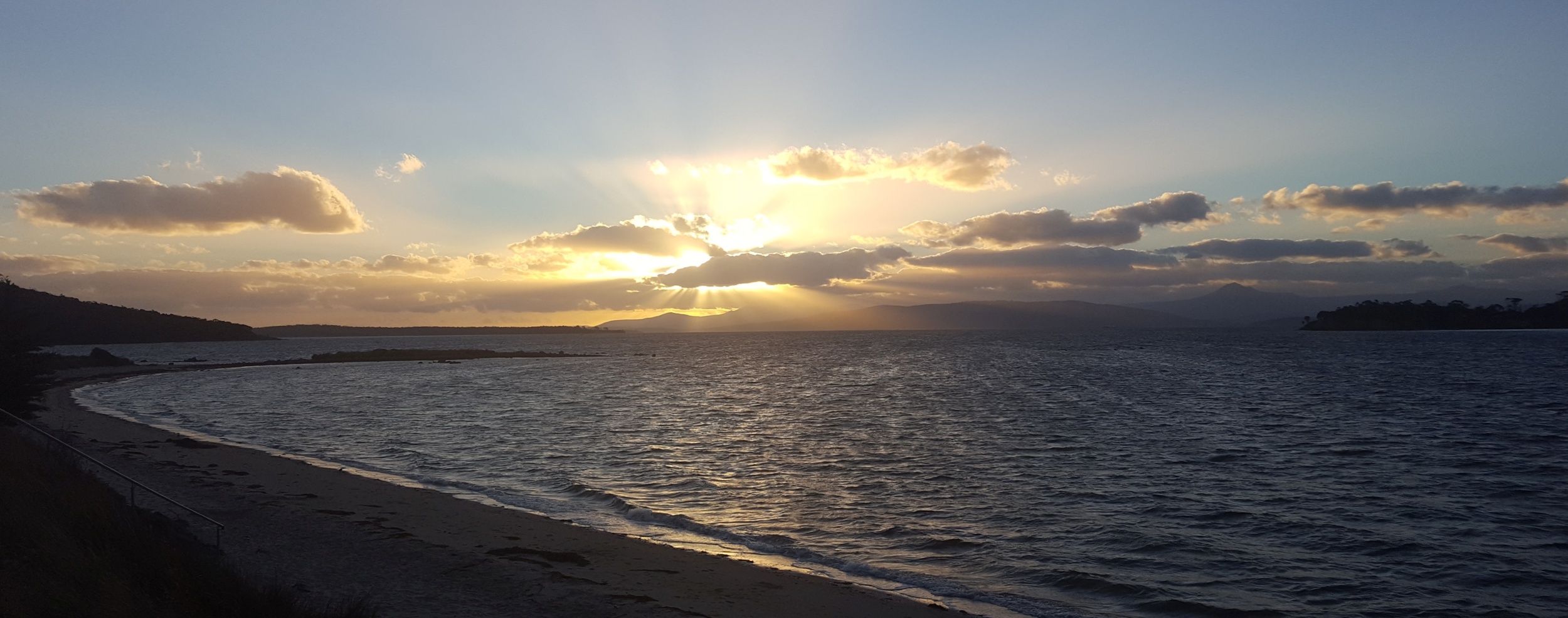

Hi Ian,
It was such fun sharing Tasmania with you and I do hope you come back with your family soon. Really enjoyed reading your website and am very impressed with your photographs. Warmest regards, Els
Happy birding
Thx Els, and thanks again for your amazing, warm hospitality!